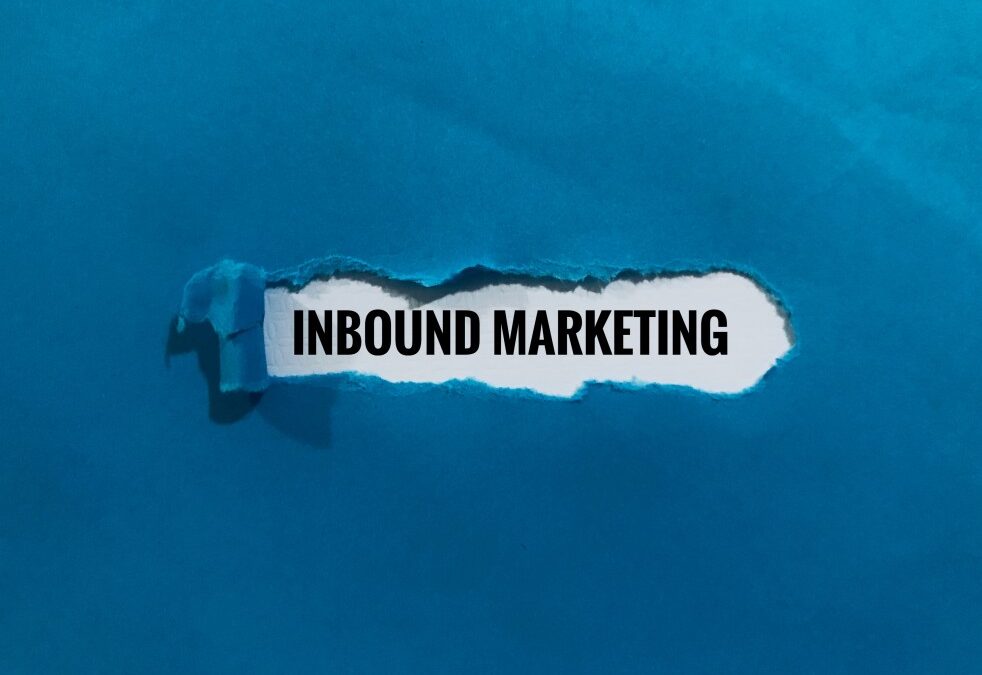In today’s rapidly evolving business landscape, B2B companies are discovering the pivotal role of inbound marketing in forging meaningful connections and driving remarkable growth. Welcome to “The Guide to B2B Inbound Marketing,” where we delve into the strategies, tactics, and insights that power this transformative approach.
In a world saturated with traditional, outbound marketing methods, B2B inbound marketing emerges as a beacon of effectiveness, offering a customer-centric methodology that resonates with modern buyers. From crafting compelling content to nurturing leads through personalized experiences, this guide is your compass to navigating the dynamic realms of inbound marketing tailored specifically for the B2B realm.
Join us on a journey to decode the intricacies of attracting, engaging, and delighting potential clients. Whether you’re a seasoned marketer or just embarking on this path, our comprehensive guide equips you with the knowledge to harness the true potential of your B2B inbound marketing strategy and elevate your business to unprecedented heights.
Introduction to B2B Inbound Marketing
In the dynamic landscape of B2B marketing, where relevance and personalization reign supreme, B2B Inbound Marketing emerges as a strategic powerhouse. Unlike traditional methods that push products onto prospects, an inbound marketing campaign draws potential clients in by providing valuable and insightful content tailored to their needs.
By addressing pain points and offering solutions, B2B inbound marketing establishes your brand as an industry thought leader, nurturing trust and credibility with prospective customers. This approach isn’t a fleeting trend; it’s a fundamental shift that aligns with modern businesses’ purchasing decisions.
As B2B buyers conduct extensive research before engaging with a brand, inbound marketing becomes the cornerstone of your brand’s visibility, by positioning your content where potential customers and clients actively seek solutions—whether through search engines, social media, or industry forums—you ensure that your brand’s value resonates at every stage of the buyer’s journey.
Crafting an Effective Inbound Strategy for B2B
Navigating the vast sea of B2B marketing demands a well-crafted inbound strategy that aligns seamlessly with your business goals. Unlike traditional outbound marketing methods, an effective B2B inbound strategy is built upon organically attracting, engaging, and nurturing potential clients.
Start by defining your target audience with precision. Understand their pain points, aspirations, and challenges to tailor your approach. Map out the buyer’s journey, guiding prospects through the sales funnel from initial awareness to final decision-making.
To truly excel, embrace content diversity. From insightful blog posts and thought-provoking articles to in-depth whitepapers and data-driven case studies, create assets that resonate across different buying cycle stages.
Equally crucial is mastering lead nurturing. Use email campaigns to deliver personalized content to qualified leads, address specific pain points, and position your brand as the solution. Craft compelling CTAs and optimize landing pages to facilitate conversions effectively.
Your B2B inbound strategy isn’t static; it’s a dynamic refinement process. Regularly analyze data to uncover what’s working and what needs adjustment. Adapting to ever-evolving trends ensures your strategy aligns with your audience’s needs and preferences.
Creating Compelling B2B Content
In B2B inbound marketing, content is the foundation for successful campaigns. Compelling content isn’t just about churning out words; it’s about delivering value that resonates with your target audience.
Start by understanding your audience’s pain points, challenges, and aspirations. Your content should offer solutions, insights, and actionable advice that address these concerns. Craft thought-provoking blog posts that showcase your industry expertise and position your brand as a reliable source of information.
But don’t stop at written content. Visual elements like infographics, videos, and presentations can captivate your audience’s attention and convey complex information effectively. These formats enhance engagement and offer diverse ways to communicate your message.
Additionally, consider in-depth content like whitepapers and eBooks. These resources establish your brand as a thought leader while providing in-depth knowledge that appeals to decision-makers.
Remember, consistency is key. Develop an editorial calendar that ensures a steady content stream across various platforms. This consistency reinforces your brand’s presence and credibility over time.
Lastly, embrace user-generated content and interactive formats. Case studies, testimonials, and user-generated stories provide social proof, while quizzes and polls engage your audience directly.
Want to attract, engage, and convert high-value clients with inbound marketing?
Contact Growth Hackers
Mastering SEO for B2B Success
In B2B marketing, where online visibility and targeted engagement are paramount, mastering Search Engine Optimization (SEO) is the linchpin of success. SEO isn’t just about securing a high ranking on search engine result pages; it’s about strategically positioning your brand as the answer to your audience’s queries.
To embark on the journey of mastering SEO for B2B success, start with comprehensive keyword research. Dive into your industry landscape to uncover your potential clients’ specific terms and phrases when seeking solutions. This foundational step lays the groundwork for optimizing your content.
Strategically integrate these keywords into your website’s structure and on-page elements. Craft compelling meta titles, descriptions, and headings that align with the search intent of your target audience. Create valuable and relevant content that showcases your expertise and addresses your audience’s pain points.
In the B2B arena, leveraging long-tail keywords—specific, niche phrases—can yield fruitful results. These keywords often reflect the detailed queries B2B buyers make when researching solutions. Incorporate them seamlessly into your content to capture the attention of high-intent prospects.
Off-page SEO is equally vital. Build authoritative backlinks from reputable industry sources to establish your brand’s credibility. Collaborate with other businesses for guest posts or co-created content to expand your online footprint.
In the rapidly evolving digital landscape, technical SEO is a critical component. Optimize your website for mobile responsiveness, fast loading times, and seamless user experiences. Implement structured data markup to enhance the visibility of key information in search results.
By mastering SEO for B2B success, you position your brand as an authoritative resource that’s relevant and easily discoverable. This strategic approach ensures that your solutions are readily available to B2B buyers at every stage of their decision-making journey, ultimately driving sustained growth and impactful engagement.
Engaging B2B Audiences on Social Media
In the B2B landscape, social media isn’t just a platform for sharing memes and updates; it’s a dynamic arena for fostering meaningful connections, building relationships, and showcasing your brand’s expertise. Engaging B2B audiences on social media requires a strategic approach that resonates with professionals seeking valuable insights and solutions.
Start by understanding the nuances of each social media platform. LinkedIn, the professional networking hub, offers a fertile ground for sharing industry insights, thought leadership, and establishing your brand’s credibility. With its fast-paced interactions, X (Formerly Twitter) is perfect for real-time engagement and concise updates. For example, for LinkedIn, you need to provide professional content while with Twitter marketing, you can be a bit more borderline.
Content diversity is key. Share a mix of original content, curated industry news, and informative articles. Thought-provoking blog posts and articles can position the sales team and your brand as a knowledgeable industry leader, capturing the attention of decision-makers and influencers.
Visual content reigns supreme. Infographics, videos, and images can convey complex information succinctly and capture your audience’s attention in the scrolling frenzy of social media feeds. These visuals amplify engagement and provide diverse ways to communicate your message.
Consistency is a linchpin. Develop a content calendar that outlines when and what you’ll post. Regular updates maintain your brand’s presence and credibility, ensuring your audience remains engaged and informed.
Engagement is a two-way street. Respond to comments, participate in discussions, and acknowledge mentions. Establishing a rapport humanizes your brand, fosters authenticity, and paves the way for meaningful interactions.
To truly engage B2B audiences, provide value through educational content, insightful industry analysis, and solutions that address pain points. Webinars, live Q&A sessions, and industry-specific chats can facilitate real-time interactions and showcase your brand’s expertise.
In the ever-evolving landscape of B2B marketing, mastering the art of engaging B2B audiences on social media isn’t just about generating likes; it’s about forging connections, nurturing relationships, and positioning your brand as an indispensable source of insights and solutions in the digital realm. By understanding the platforms, delivering valuable content, and fostering meaningful interactions, you can harness the power of social media marketing to elevate your brand’s B2B presence.
Driving B2B Conversions with Email Campaigns
Email marketing may be one of the oldest digital marketing tools, but it’s still a powerhouse for driving B2B conversions. Strategic email campaigns allow you to nurture leads, provide tailored content, and guide potential clients along the buyer’s journey.
Personalization is the cornerstone of successful B2B email campaigns. Segment your email list based on various criteria such as industry, job role, and stage in the buying cycle. Tailor your content to address each segment’s specific pain points and needs.
Craft compelling subject lines that grab attention and provide a glimpse of the value within the email. A/B testing subject lines and email content can help you refine your approach over time.
Value-driven content is crucial. Whether it’s informative blog posts, case studies, or exclusive resources, ensure each email delivers meaningful insights that help your leads overcome challenges.
Landing pages are the bridge between your emails and conversions. Optimize them with persuasive copy, relevant visuals, and clear calls-to-action (CTAs) that guide readers toward taking the desired action.
Lastly, monitor and analyze email performance. Metrics like open, click-through and conversion rates provide valuable insights into what’s working and where improvements are needed
Optimizing Landing Pages and CTAs for B2B
When it comes to B2B conversions, your landing pages and calls-to-action (CTAs) play a pivotal role in guiding visitors toward taking action. Optimizing these elements ensures your audience’s journey is seamless and effective.
Landing pages are your opportunity to provide focused information and persuade visitors to take a specific action. Keep them clean, clutter-free, and aligned with the messaging that brought users to the page.
Headlines should be clear and concise, conveying the value of your offer. Use persuasive subheadings and bullet points to highlight key benefits and features.
Visuals, such as relevant images or videos, can enhance engagement and provide visual context for your offer. Ensure visuals are high-quality and resonate with your target audience.
CTAs are the driving force behind conversions. Make them stand out by using contrasting colors, ensuring sufficient white space, and placing them strategically on the page.
Use action-oriented language in your CTAs. Instead of generic phrases like “Submit,” use phrases like “Get Started,” “Download Now,” or “Request a Demo.”
Consider A/B testing different versions of landing pages and CTAs to determine which elements drive better results. This iterative approach helps you refine your strategy over time.
Measuring B2B Inbound Success with Analytics
In the realm of B2B inbound marketing, data is your compass. Measuring success isn’t just about tracking metrics; it’s about extracting actionable insights that drive informed decisions and continual improvement.
Start by defining key performance indicators (KPIs) that align with your business objectives. These could include website traffic, conversion rates, lead generation, and engagement metrics.
Implement robust analytics tools like Google Analytics to track user behavior on your website. Monitor page views, bounce rates, and traffic flow through different pages to uncover patterns and opportunities for enhancement.
Attribution analysis helps you understand the touchpoints that contribute to conversions. Whether it’s a blog post that introduced a lead or a social media interaction that nudged them towards conversion, attribution models provide a holistic view.
Email campaign performance can be gauged through open, click-through, and conversion rates. These metrics offer insights into the effectiveness of your messaging and the resonance of your content.
Regularly analyze your data to identify trends, successes, and improvement areas. This data-driven approach allows you to adapt your strategy to meet the evolving needs of your B2B audience.
Fuel your B2B success today with inbound marketing!
Refining your B2B Inbound Strategy
Even the most well-crafted B2B inbound strategy needs refinement over time. The landscape evolves, and so do your audience’s preferences. To ensure sustained success, continuous improvement is the key.
Start by conducting regular audits of your content. Identify pieces that are performing well and those that need updating. Over time, certain topics may become more relevant to existing customers, while others may lose relevance.
Regularly assess your SEO strategy. Search engine algorithms evolve, and your keyword landscape may change. Adapt your content to ensure it remains optimized and aligns with current search trends.
Review your social media engagement on a regular basis to readjust your B2B sales lead generation depending on the data you collect. Monitor which platforms drive the most interaction and focus your marketing efforts accordingly. Refine your content mix based on the preferences of your B2B audience.
Gather feedback from your audience through surveys, comments, and direct interactions. This insight can provide valuable guidance for adjusting your content, tone, and approach.
Collaborate with your team to brainstorm new ideas and innovative approaches. Your team’s collective expertise can spark fresh ideas that resonate with your audience.
Regularly update your buyer personas. As your business evolves, so might your ideal customer profile. Ensuring accurate personas enables you to tailor your marketing strategy more effectively.
Future Trends in B2B Inbound Marketing
The landscape of B2B inbound marketing strategies is ever-evolving, driven by technological advancements and changing customer behaviors. Staying ahead of the curve requires understanding the future trends that will shape B2B inbound marketing.
Artificial Intelligence (AI) is poised to revolutionize B2B marketing. From predictive analytics that guides content creation to chatbot marketing automation that enhances customer engagement, AI offers many opportunities to streamline processes and deliver personalized experiences.
Video content continues to dominate. As attention spans dwindle, engaging visual content like videos and live streams captures the audience’s attention more effectively than text alone.
Voice search is gaining prominence. With the rise of smart devices, optimizing your content for voice search is crucial. Conversational keywords and structured data markup are key components of voice-friendly content.
Personalization takes center stage. B2B buyers expect tailored experiences, and brands that can deliver personalized content, recommendations, and interactions stand to gain a competitive edge.
Ethical and sustainable practices resonate. B2B audiences are increasingly drawn to brands that prioritize ethics and sustainability. Content that highlights your brand’s responsible practices can enhance your reputation.
Closing Thoughts About B2B Inbound Marketing
B2B inbound marketing is a pivotal strategy that continues to reshape the modern business landscape. Its customer-centric approach and focus on valuable, educational content have revolutionized how businesses engage with their audience.
By fostering genuine connections through personalized content marketing, B2B inbound marketing attracts and nurtures leads, ultimately driving conversions and revenue growth. The methodology’s data-driven nature allows for refined targeting and continuous optimization, ensuring maximum efficiency in inbound methodology and resource allocation.
However, successful implementation demands a deep understanding of the target market, precise content tailoring, and a commitment to long-term relationship building. As industries evolve, B2B inbound marketing’s adaptability will remain crucial.
Embracing this approach empowers businesses to establish thought leadership, build trust, and differentiate themselves in competitive markets. To thrive in the dynamic B2B landscape, embracing the tenets of an inbound marketing strategy is no longer a choice but a necessity.
Growth Hackers is a leading B2B inbound marketing agency helping businesses from all over the world grow. There is no fluff with Growth Hackers. We help entrepreneurs and business owners supercharge their B2B growth with inbound marketing, increase their productivity, generate qualified leads, optimize their conversion rate, gather and analyze data analytics, acquire and retain users and increase sales. We go further than brand awareness and exposure. We make sure that the strategies we implement move the needle so your business grow, strive and succeed. If you too want your business to reach new heights, contact Growth Hackers today so we can discuss about your brand and create a custom growth plan for you. You’re just one click away to skyrocket your business.









